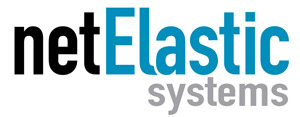Many market research reports have recently highlighted the growth in virtual broadband network gateways (vBNGs). The factors driving vBNG growth include greater scalability, increased flexibility, and lower costs compared to hardware-based BNGs.
Once a broadband service provider decides to purchase a vBNG, where should they buy it? There are many vendors to choose from, including traditional router manufacturers, low-cost hardware router companies, and software vendors.
Buying vBNGs from a Traditional Router Manufacturer
The large router manufacturers have been around for a long time. Everyone knows them. And they have traditionally sold solutions that bundle BNG software with their proprietary hardware. However, the growth of virtual BNGs hasn’t escaped their view.
Traditional hardware manufacturers like Cisco and Juniper have now released virtual BNGs. However, these vendors have built their expertise (and profits) on hardware-based routers. That history, culture, and focus will be slow to change.
In addition, the legacy router manufacturers work very closely with some of the world’s largest carriers in developing their BNG products. To meet the demanding requirements of the biggest carriers, traditional router vendors try to put everything into their fully-featured BNGs. While this may work well for large carriers with large budgets, small or regional providers may not have the budget (or the need) for these fully-loaded BNGs.
An Alternative: Low-Cost Hardware Router Manufacturers
Low-cost router manufacturers provide a less expensive alternative. For example, many small broadband providers start out using MikroTik hardware routers, which can be a very good choice for small networks. MikroTik sells affordable routers targeted at the small ISP market.
It may sound funny, but these lower-cost hardware routers also come at a price. And that price is a lack of scalability. Broadband providers tend to eventually outgrow MikroTik routers, since each router has limited scalability. Having to continually purchase new MikroTik routers is usually not an appealing solution, given the pain involved in managing an increasing number of routers.
For example, Softcom, a Wireless Internet Service Provider (WISP) based in Galt, California, was experiencing a 30% increase in bandwidth usage (due to the pandemic) and was concerned by the lack of scalability provided by their MikroTik routers. Brian Meredith, Softcom’s Chief Technology Officer (CTO), said “Our MikroTik equipment wasn’t scaling very well and we were experiencing traffic drops, which was negatively impacting our customer experience.”
Software-Based Vendors

Software companies focus on increasing network scalability by separating network functions from proprietary hardware. By separating network functions from the physical infrastructure, it isn’t necessary to purchase additional hardware appliances every time you need more network capacity. You can quickly add new capacity with a few software commands.
Disaggregating BNG software from the hardware also enables broadband providers to select the software and hardware that best meets their needs, from a variety of vendors. These software-based vBNG solutions typically run on commodity x86 servers, which provide greater scalability and lower costs compared to proprietary solutions from hardware router manufacturers.
However, there is a similarity between traditional router manufacturers and some software-based vBNG vendors: they’re both targeting the big carriers. Virtual BNG vendors focused on multi-national carriers will talk about their future technology. But much of this technology isn’t production-ready yet. And some of the technology this is ready (and being charged for), isn’t needed by smaller, regional providers.
Another challenge with some vBNGs may be performance. Virtual BNGs typically replace access routers in the network, so providers should review performance levels when comparing vBNG vendors. Particular attention should be given to performance levels that have been verified by a reputable third-party. Performance claims based on in-house testing can be somewhat suspect.
How netElastic Delivers on the Promise of vBNG
netElastic is a software company that developed one of the industry’s first software-based BNGs. Since it launched, netElastic vBNG has become an industry leader by using software-defined networking (SDN) technology to deliver market-leading scalability and flexibility with an optimized data plane and highly scalable design.

netElastic vBNG also takes advantage of the ever-increasing power of white-box servers to provide the elastic scalability broadband providers need. As a testament to its scalability, netElastic supports very small subscriber bases up to millions of subscribers.
For broadband providers concerned about vBNG performance, netElastic and Intel have been working together to maximize the performance of vBNGs. netElastic vBNG was recently tested on Intel 3rd generation Intel® Xeon® Scalable processors, and the test results showed vBNG achieved up to 1 Tbps throughput per server, which is a new level of performance for vBNGs.
A vendor’s technical support can also be a differentiator, which is it for Ufone, one of New Zealand’s leading Business VoIP service providers. Nigel Rayneau, CEO at Ufone, said “netElastic support has been nothing but excellent. Any issues or queries are taken seriously and response times have been a fraction of what we’re used to with our other vendors.”
To learn more about vBNGs, please read the white paper on “Next Generation vBNGs: Is Your Broadband Network Ready?”
If you’d like to try netElastic vBNG for yourself, please contact us today or schedule a demo.
